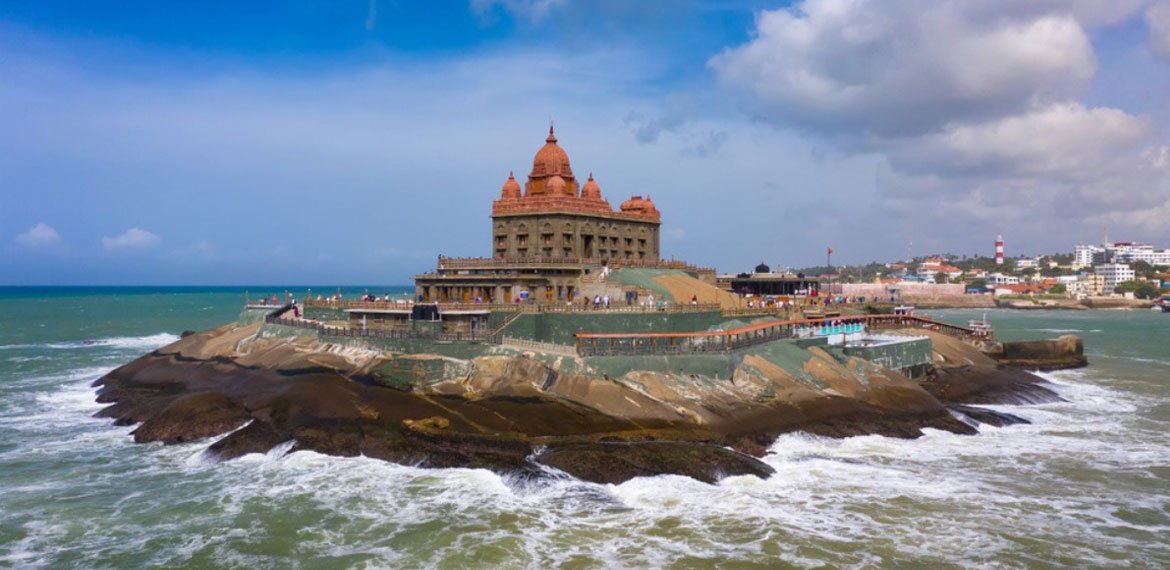Kanyakumari

Kanyakumari is an interesting place for history and nature enthusiasts
Kanyakumari, located near Kerala and sandwiched between India's western and eastern ghats, enjoys a wonderful interaction with nature. It is sometimes regarded as one of Asia's top tourist destinations, and it is a fascinating location for history and environment enthusiasts.
History of Kanyakumari:
Kanyakumari is the southernmost town on mainland India and is sometimes referred to as 'The Land's End. There is evidence of human culture in the area dating back 4000 years. The city flourished throughout the megalithic or early historic period, but many of its original ruins have been lost owing to sea erosion.
It is a popular tourist destination, known for its spectacular ocean sunrise, sunset, and moonrise, as well as a significant pilgrimage site due to its numerous religious structures, memorials, and statues.
Kanyakumari Today:
There are several places to see in town, including the Kumari Amman (Kanyakumari Temple), the Vivekananda Rock Memorial, and the 133-foot-tall statue of Tamil poet Thiruvalluvar.
The beautiful Padmanabhapuram Palace, built in the 16th century and featuring black granite floors, murals, and floral sculptures, is a must-see during your visit. Equally stunning is the Bhagavathy Amman Temple, which is thought to be over 3000 years old and one of Kanyakumari's most venerated places of worship.
There is also a significant Gandhi memorial, which was created on the site where the urn carrying Gandhi's ashes was shown for public inspection before immersion. A more sobering landmark is the Tsunami Memorial Park, which serves as a monument to the approximately 280,000 people killed by the 2004 Indian Ocean earthquake and tsunami.
Mythological History of the Kanyakumari District:
The Kanyakumari region has been the subject of numerous mythological stories. One such narrative is that of Goddess Parvati's incarnation, Kanya Devi. Kanya Devi, the avatar of Goddess Parvati, was to marry Lord Shiva, the Supreme God of Shaivism (the four most widely followed Hindu sects). However, Lord Shiva did not attend the marriage ceremony. The food grains that were to be prepared for the wedding ceremony remained undercooked and unused later on. As time passed, the food grains transformed into stone. Kanya Devi is therefore regarded as a virgin deity and sanctifies followers and visitors to the locality.
Another well-known mythological story about the Kanyakumari district involves Lord Hanuman, a Hindu god who was considered Lord Rama's greatest lover. According to legend, Lord Hanuman, while transporting the herb-bearing mountain back to Lanka to cure Lakshmana's terrible injuries, dropped a chunk of that mountain, which is now known as Marunthuvazh Malai in the Kanyakumari area. The legendary origins of Kanyakumari include stories about Agathiyar, one of the Saptarshis who is mentioned multiple times in Vedic literature, and an early Siddhar.
It is believed that Agasthiya Munivar lived in this area since he was skilled in medicinal herbaceous plants. Many people believe that this is what has led to the discovery of various medicinal herbaceous plants on Marunthuvazh Malai. It is worth noting that a panchayat town in Kanniyakumari district, Agastheeswaram, is named after Agasthiya Munivar.



